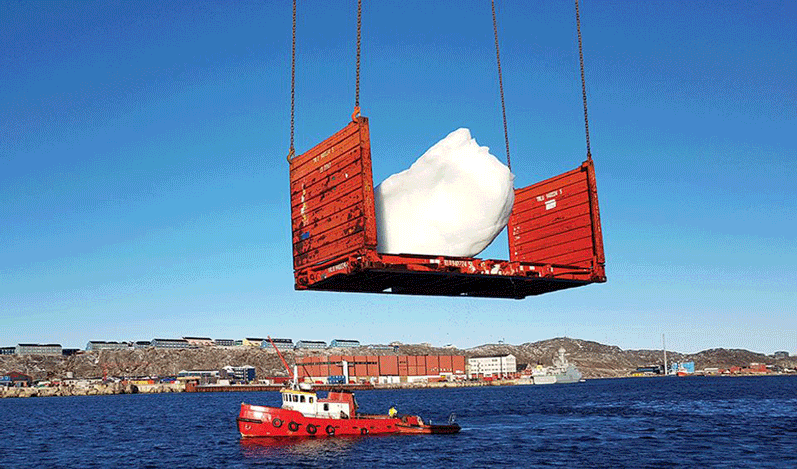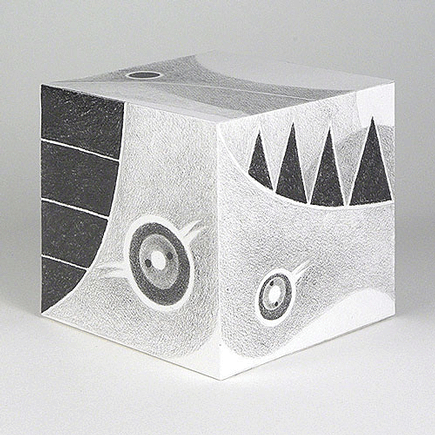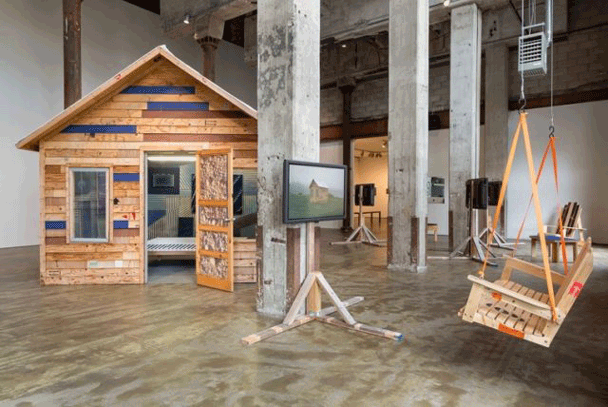The art world can be a wasteful and excessive place, contributing to the ever-growing climate change crisis. Artists travel constantly to artist residencies, gallerists and collectors jet-set to art fairs multiple times a month, and creative productions generate a lot of excess material and waste that becomes a part of the already overwhelmed waste stream.
Many artists have been responding to the climate crisis through their work lately, either documenting the changing landscapes or using recycled materials. Climate change is a hot topic in the art world these days, and last year’s Golden Lion winner proved that. The Pavilion of Lithuania presented an opera and installation entitled Sun and Sea (Marina), where a room full of beach-goers, relaxing on sand, covered in heavy synthetic sunlight, sang an opera of apathy and acceptance for a world that had succumbed to the effects of climate change and abundant waste. Many visitors left the pavilion crying. Another notable artist, Olafur Eliasson, made a recent piece that stirred new conversation. For “Ice Watch,” he shipped 24 pieces of a Greenland iceberg to the front of the Tate museum so that visitors could watch, feel, and hear the ice melting before their eyes. However, awareness doesn’t necessarily translate to real tangible change and the art world continues to repeat its wasteful practices. Eliasson’s piece used cranes, a cargo ship and fridge containers for transportation, emitting carbon into the air and oil into the sea. His climate change installation contributed to the problem. Many artists have taken to critiquing that kind of irony rampant throughout climate activism pieces.

Producing major artwork takes a major toll on the environment. Materials can be toxic, and carbon is released as they’re manipulated. Art productions can be extremely wasteful, and as artists and assistants often fly from one country to another to complete work, and add more carbon into the atmosphere. Artist Michael Wang decided to look at the carbon footprint of twenty famous art pieces with an installation to reveal their impact. In his series, “Carbon Copies” Wang created a collection of small cubes, each representing an artwork made by heavy hitters like Damien Hirst, Marina Abromoviç, Takashi Murukami, and Richard Serra.

Wang presented stylized cubes along with a pamphlet that showed the exact amount of carbon that each artwork had released into the atmosphere during production. The exhibit was equally scientific and artistic, critiquing the art world and its contributions to climate change with his handmade cubes adorned with unique textures and designs. The entire installation sold as one piece for a “carbon offset” price that would then erase the artwork’s carbon footprint. The funds were ultimately donated to the project Carbon Capture. As such, Wang’s installation confronted his fellow artists and art world professionals, asking them to consider art’s impact on the environment. The installation sparks conversation within the art historical framework and critiques from the inside out.
One of the largest generators of waste in the art world is art fairs. Artists and art installers, Lauren Was and Adam Eckstrom spent three years collecting scraps of wood and carpet from art fair dumpsters. Then they built a cottage and “paintings” with the detritus, and lawn furniture using art crates for a project called “When the Smoke Clears: The Fair Housing Project.” The work questions the long-term sustainability of the art market and points to how wasteful the capitalist nature of art fairs is The work asks its audience to ponder how the art world can help these two issues, rather than perpetuate them.

Art has always been questioning the status quo and offering new ideas for how society can live more harmoniously. A pandemic and the climate crisis pushed society to change its way of functioning. The artworld is responding by taking art fairs online, so for now carbon emissions have been reduced. Perhaps these uncertain times will finally push the art world into solving climate change issues and changing its practices to the forefront in the fight for sustainable creation.
